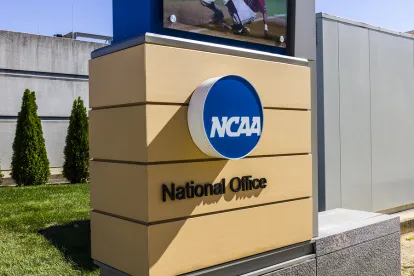California Senate Bill 206,[1] the “Fair Pay to Play Act,” was amended again last month, and is making its way through the legislature under sponsorship by Sen. Nancy Skinner-D and Sen. Steven Bradford-D. If passed, the new law would pave the way for college athletes in California to earn compensation—including a stipend or other financial incentive from the college itself—for licensing their name, image, or likeness. The law would also allow athletes to obtain legal representation in connection with their participation in college sports, all while maintaining scholarship eligibility and amateurism under the National Collegiate Athletics Association’s (NCAA) Division I and II eligibility criteria.[2]
This potential creation of a new pool of influencers and brand ambassadors provides marketing teams and their counsel an opportunity to brush up on publicity licensing issues facing marketers in the digital age. For example, consider the following:
Types of Intellectual Property Involved. Often, when brands engage athletes in a promotional context, the brand is not only interested in the athlete’s personal name and image, but also that of the sports team. Team assets are managed differently across sports and leagues, and it’s certainly no different at the college level. The brand’s desire to use trademarks, copyrighted material, and publicity rights owned by the various parties involved must be carefully considered in promotional licensing transactions.
License Grant. Athletes rarely grant broad, perpetual rights to use their name and likeness. Indeed, with the rapid pace of the digital advertising industry, the benefits on both sides of a publicity license often show diminishing returns in a relatively short period. However, to maximize return on their investment, brands must consider all intended (or even potential) uses over the entire campaign, and all potential marketing channels, before jumping into a short-term license. For example, the grant language should contemplate perpetual rights for content produced, approved and first published during the license term, but which may subsequently appear in public for years to come, such as social media content. In addition, the license should contemplate future references to past activity, such as in “anniversary” campaigns, awards programs, or legacy brand asset compilations. Similarly, most publicity licensors attempt to geographically limit licensed use, often coinciding with league or team marketing area restrictions, third-party exclusivity agreements, or other factors. As such, brands should consider specifying any necessary exceptions to accommodate digital assets or online activations that lack geo-targeting capabilities, and are thus worldwide by default.
Rights to the Rights. Many leagues and sports teams have some input into the way their individual athletes’ publicity rights are licensed, and some even have the right to directly grant such a license. At a minimum, most leagues and teams require approval rights and adherence to existing category or content exclusivity restrictions. Therefore, brands should ensure their publicity license provides appropriate approval rights, warranties, indemnities, and damage provisions to protect the brand in the event the league or team shuts down the athlete’s participation in the marketing campaign. While the proposed Fair Pay to Play Act does not address these issues at the college level (because the Act is intended to protect athletes’ scholarships and amateur status, rather than to expressly authorize monetization of student-athlete publicity rights), future agreements between students and colleges covering these issues are sure to result if the bill passes into law.
Morals Clause. Because news spreads far and wide in an instant, now more than ever, a “morals clause” has become standard provision for any brand engagement. These provisions permit the brand to exit the relationship and disassociate from the athlete or other talent following instances of misconduct or public controversy. Although often contested by the licensor, marketers can still obtain favorable morals clauses when the language is thoughtfully drafted and artfully negotiated.
Brand ambassador, influencer, and even simple publicity agreements with athletes at any level can be tricky to navigate, but can be immensely valuable to brands if properly crafted. These are just a few of the issues marketers should consider in the early stages of planning for such an engagement. Additional issues will certainly emerge if the California Fair Pay to Play Act is passed into law—such as how student-athlete commitments to the team and school will impact commercial opportunities to monetize the athlete’s publicity—and it will be interesting to see how student-athlete publicity licenses will be uniquely adapted accordingly.
[1] https://leginfo.legislature.ca.gov/faces/billTextClient.xhtml?bill_id=201920200SB206; see related HR 1804 (Walker, 2019), the “Student Athlete Equity Act,” which is a bipartisan bill to amend the definition of a qualified amateur sports organization in the federal tax code to remove the restriction on student-athletes being compensated for use of their name, image or likeness.
[2] http://www.ncaa.org/student-athletes/future/amateurism
Robert Hough contributed to this post.



 />i
/>i
